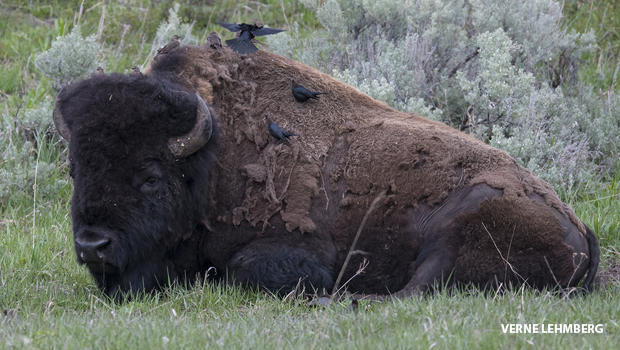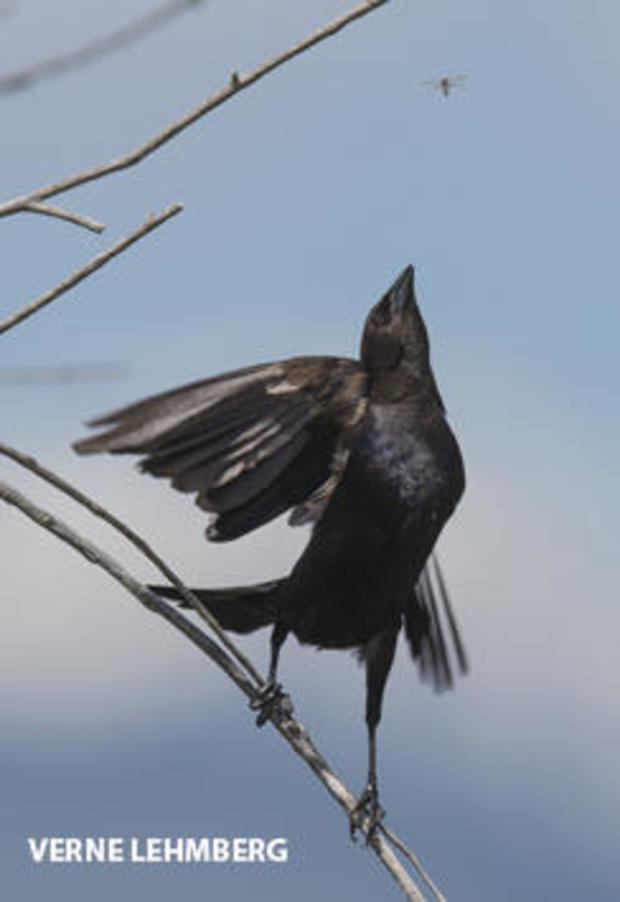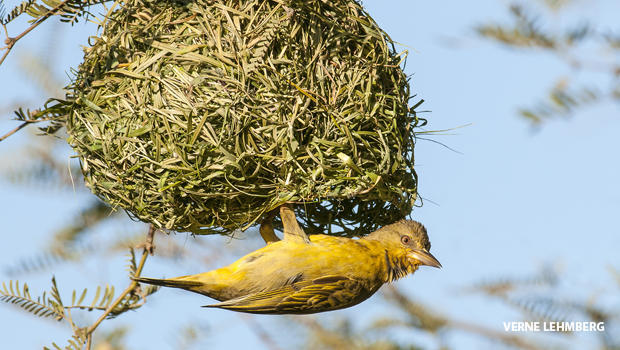Nature up close: Reproductive freeloaders
By "Sunday Morning" contributing videographer Judy Lehmberg.
Recently the "Sunday Morning" Nature segment highlighted bison in South Dakota. Historically bison ranged in the multi-millions over the grasslands of North America. Today much of their original habitat has been converted into farms and land for cattle grazing, and their native range and population is less than .001 percent of what it was 400 years ago.
Ironically, the population of a bird that depended on bison for its survival has increased while the bison population has plummeted.
Brown-headed cowbirds evolved with bison. They move freely around grazing bison and pick up insects disturbed by their grazing. Cowbirds have thrived while bison haven't, because the former have been able to adapt to the encroachment of humans. Their population has increased as humans have cut down forests, built roads that fragment forests, and designated increasing amounts of land to cattle grazing. Now, brown-headed cowbirds use cattle the same way they used bison, to stir up insects for them. But another habit they have has not changed – that is, how they reproduce.
They aren't much to look at, but brown-headed cowbirds possess some interesting reproductive habits. Because they evolved to follow migrating bison herds, traditional nesting was not successful because they couldn't afford to stay in one location long enough to build a nest, lay and incubate eggs, and feed their chicks. Instead, they have evolved another, trickier method of raising their young: they fool another species of bird into doing it for them. Brown-headed cowbirds lay their eggs in other birds' nests, a practice known as brood parasitism.
It isn't unusual to see a small warbler such as a yellow-rumped warbler feeding a newly-fledged cowbird chick.
Brood parasitism is thought to have evolved first in Africa and Asia because some African and Asian birds have developed defenses such as removing other species' eggs or even building a new nest on top of the one containing the alien egg.
Most of the brood parasites in Africa are cuckoos. They lay their eggs in the nests of birds such as southern double-collared sunbirds, little bee-eaters, and the bokmakierie.
The evolution of brood parasitism is considered to be relatively new in brown-headed cowbirds because they aren't picky about which species of bird nest they choose to house their eggs, and the host birds have not developed any defenses against them.
Brown-headed cowbirds have increased their numbers to the point they are considered pests in some areas where the species of birds they parasitize have radically declined, particularly Kirkland's warblers in Michigan and black-capped vireos and golden-cheeked warblers in Texas. One of the last refuges for the latter two species is Fort Hood, Texas, an Army base that has worked for years to protect the vireo and warbler while testing the best ways to reduce cowbird numbers.
It is one war the Army will never win, but the number of cowbirds has declined, and thus increased the nesting success of both the vireo and warbler.
Birds that are brood parasites are in a constant evolutionary arms race. If the host species is too successful, the brood parasite will not survive, and visa versa.
For further reading:
- Cowbirds and other brood parasites, Ortega, C.P., University of Arizona Press, Tucson, Ariz., 1998.
- The Ecology of Avian Brood Parasitism, Croston, R., and Hauber, Mr., Nature Education Knowledge, 2010.
Judy Lehmberg is a former college biology teacher who now shoots nature videos.
For more info:
- Judy Lehmberg (Official site)
- Judy Lehmberg's YouTube Channel
To watch extended "Sunday Morning" Nature videos click here!








